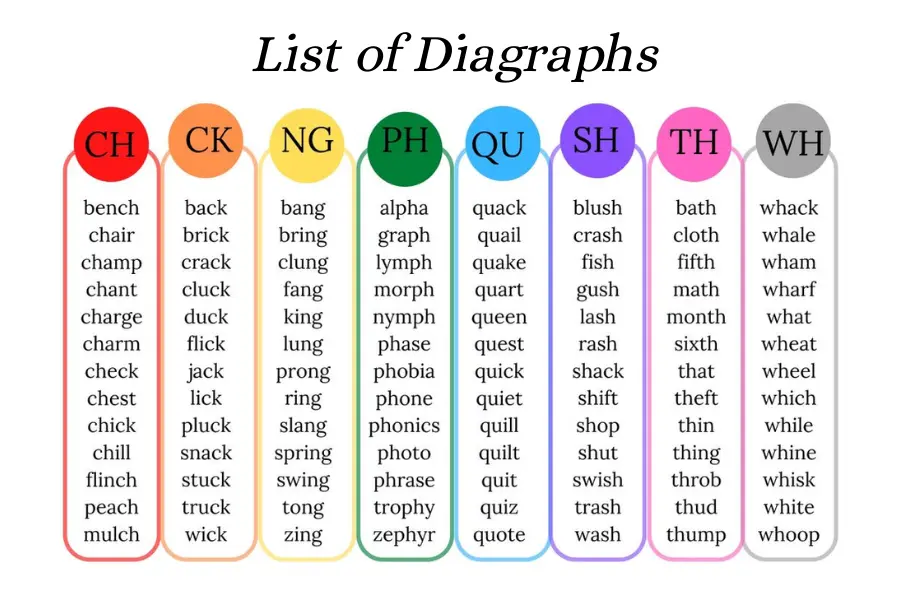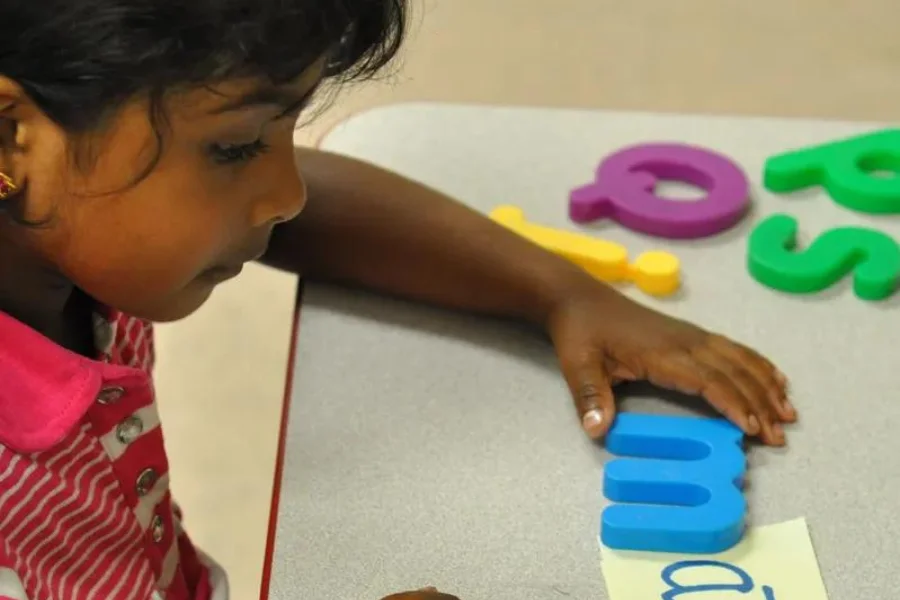Phonics Diagraphs

Source: istock
Phonics Diagraphs
Entering the world of Phonics Diagraphs through a Phonics Certificate Course can be a pleasant journey for both parents and teachers. Phonics Diagraphs is a keystone of early reading education, playing a vital role in helping kids understand how letters are associated to create unique sounds.
This blog will focus light on the significance of Phonics Diagraphs in developing reading skills, offer approaches to teach them effectively, and debate on common contests children face when learning Phonics Diagraphs. A Phonics Certificate Course provides the right approach and understanding of Phonics Diagraphs and can be an opening to improved literacy and a love for reading in early learners.
Table of Content

Source: fastweb
What is a Digraph and Examples?
A Diagraph in phonics is a pair of letters that together make a single sound. Unlike blends, where each letter retains its sound, digraphs merge to form a new sound. Accepting Phonics Diagraphs is vital in initial reading and spelling.
Digraph and Examples:
- ‘ch’ –Here, ‘c’ and ‘h’ blend to produce a unique /ch/ sound, different from the sounds of ‘c’ and ‘h’ individually. For example: ‘chair’ and ‘cheese’.
- ‘sh’ – In Phonics Diagraphs like ‘sh’, the letters make a single sound in ‘sheep’ or ‘ship’. The ’s’ and ‘h’ do not sound distinct but make the /sh/ sound.
- ‘th’ – Digraph has two different sounds as in ‘this’ (voiced sound) and ‘think’ (unvoiced sound). The ’t’ and ‘h’ together make a single sound, indicating the convolution of Phonics Diagraphs.
- ‘ph’ – It makes an /f/ sound, as in ‘phone’ or ‘photograph’. This shows how Phonics Diagraphs can characterize sounds differently from their single-letter sounds.
- ‘wh’ – Words like ‘what’ and ‘whale’, where it produces /wh/ sound. This digraph blends ‘w’ and ‘h’ to create a unique sound.
Phonics Digraphs are crucial for early readers to understand the complexity and beauty of language. They highlight how letter combinations can change sounds, a fundamental concept in phonics education.
Reach +919869866277 / +919869546913 to join the Phonics Certificate Course.
To download the Phonics brochure, Click here!
List of Diagraphs
Digraphs in Phonics are couples of letters that produce one sound, different from the sounds of each letter. These digraphs are important in teaching kids how to read and write efficiently. There are digraphs like ‘ai’, ‘oa’, ‘ie’ etc.
A List of Diagraphs you will learn through a Phonics Certificate Course:

Understanding Phonics Diagraphs is fundamental for cracking words and enhancing reading skills. Each digraph adds to the fullness of the English language, making Phonics Diagraphs an energetic factor of early knowledge of education.
Reach +919869866277 / +919869546913 to join the Phonics Certificate Course.
To download the Phonics brochure, Click here!
How do you Identify Digraphs?
Classifying digraphs in the English language is an important skill in the empire of phonics and initial reading development. A digraph is a mixture of two letters that together make a single sound. These unique couplings are important in understanding the difficulty of the English language, particularly for early learners.
How do you Identify Digraphs using the following:
Recognize Letter Combinations
Common digraphs include ‘ch’, ‘sh’, ‘th’, ‘ph’, and ‘wh’. Spotting these combinations within words is the first step in identifying digraphs.
Understand Sound Production
Each digraph produces a distinct sound. In this example, ‘ch’ in ‘church’ sounds different from ‘sh’ in ‘ship’. Listening and practicing these sounds help in distinguishing one digraph from another.
Contextual Application
Classification of digraphs is not merely about identifying sounds but also about comprehending their use in various words. For instance, the digraph ‘th’ sounds distinct in ‘this’ and ‘thing’.
The approach to identifying digraphs is not just about learning letter pairs; it’s about comprehending how they change the articulation of words. It is a crucial phonics understanding, particularly when teaching children how to read and write effectively. The proficiency to recognize digraphs enhances a learner’s phonetic awareness.
The skill of recognizing digraphs develops with consistent practice and exposure. It’s a critical element of Phonics Diagraphs learning, laying the foundation for progressive reading and writing skills. Mastering the art of recognizing digraphs is a step toward fostering proficient readers and writers.
Reach +919869866277 / +919869546913 to join the Phonics Certificate Course.
To download the Phonics brochure, Click here!

Source: leaderpubs
How Many Digraphs are there in Phonics?
In the fascinating world of Phonics Diagraphs, understanding the number and variety of digraphs is crucial for effective teaching and learning. Phonics Diagraphs help bridge the gap between simple letter sounds and intricate reading skills. Surprisingly, 18 Phonics Diagraphs are taught commonly in phonics programs to children.
Phonics Diagraphs are letter-pairs that produce a unique sound when integrated. These sounds are fundamental in teaching children how to decode words.
Let us see How Many Digraphs are there in Phonics:
- ‘ch’ as in ‘church’
- ‘sh’ as in ‘ship’
- ‘th’ as in ‘think’
- ‘wh’ as in ‘whale’
- ‘ck’ as in ‘duck’
- ‘ng’ as in ‘sing’
- ‘qu’ as in ‘queen’
- ‘ai’ as in ‘rain’
- ‘ee’ as in ‘tree’
- ‘ie’ as in ‘pie’
- ‘oa’ as in ‘boat’
- ‘oo’ as in ‘book’
- ‘oo’ as in ‘moon’
- ‘ar’ as in ‘car’
- ‘or’ as in ‘fork’
- ‘er’ as in ‘her’
- ‘ir’ as in ‘bird’
- ‘ur’ as in ‘fur’
Each of these Phonics Diagraphs introduces a distinct sound, enriching a child’s phonetic understanding. The above List of Diagraphs will help in mastering the 18 Phonics Diagraphs which further helps children to evolve as proficient readers. Educators and parents unlock a world of literacy for children as they delve into the teaching of Phonics Diagraphs. The importance of these 18 Phonics Diagraphs cannot be overstated in the realm of early reading education.
Reach +919869866277 / +919869546913 to join the Phonics Certificate Course.
To download the Phonics brochure, Click here!
How do You Explain a Digraph to a Child?
Presenting and explaining a digraph to a child can be both a fun and educational experience. The Phonics Certificate Course helps in understanding Phonics Diagraphs which are two-letter word combinations that produce a unique single sound. They are crucial in teaching children how to comprehend and master the intricacies of the English language.
How do You Explain a Digraph to a Child using the following ways:
Use Simple Examples
Begin with familiar digraphs like- ‘sh’ ‘ or ‘ch.’ Use words that children are familiar with to make the idea more applicable.
Interactive Activities
Phonics Diagraphs can be taught through engaging activities. For example, when you explain a digraph to a child, you might use letter blocks or flashcards to form different digraphs. This hands-on approach helps them understand how individual letters combine to make new sounds.
Storytelling and Songs
Children often learn better through stories and songs. Incorporate Phonics Diagraphs into these mediums. As you explain a digraph to a child, use characters or elements in the story or song that emphasize the digraph sound.
Visual Aids
Visual aids such as charts or drawings can be very helpful. These can illustrate how two letters come together to form a single sound.
Practice and Repetition
Regular practice is key in learning Phonics Diagraphs. Encourage the child to spot digraphs in their reading material or while engaging with media.
A Phonics Certificate Course aims to prepare trainees to create learning Phonics Diagraphs a pleasant and rewarding experience for the child. Children can grasp the concept of digraphs through consistent practice and engaging methods, paving the way for their reading and language growth and development.
Reach +919869866277 / +919869546913 to join the Phonics Certificate Course.
To download the Phonics brochure, Click here!

Source: bigfuture
What is Digraph and Trigraph?
Two key concepts often come up in the fascinating world of phonics- Digraph and Trigraph. Understanding What is Digraph and Trigraph helps in understanding the working of the English language, especially in the context of early reading and writing skills.
What is a Digraph?
- A Digraph is a blend of two letters that make a single sound coming together.
- Examples include ch- church, th- think, and sh- ship.
- Digraphs can be seen at the start, center, or end of words.
- They help children learn about the variability of sounds in English.
What is a Trigraph?
- A Trigraph is identical to a Digraph but involves three letters integrating to form one sound.
- Examples include ‘igh’- ‘night,’ ‘tch’- ‘watch,’ and ‘eau’- ‘beauty.’
- Like Digraphs, Trigraphs can occur anywhere in a word.
Digraph and Trigraph Dissimilarities
- The primary contrast lies in the number of letters- 2 for Digraphs and 3 for Trigraphs.
- Digraphs are more common in English whereas Trigraphs are not that common.
- Trigraphs often depict more intricate sounds, which are difficult for early learners.
Comprehending Digraph and Trigraphs is vital for anyone (teacher, parent, or student) eager to delve into phonics. A Phonics Certificate Course helps in identifying and grasping Digraphs and Trigraphs which aids in decrypting the intricacies of English articulation and spelling. The Digraphs and Trigraphs learning journey is not just about sounds, it’s about creating a robust foundation for literacy and a love for language.
Reach +919869866277 / +919869546913 to join the Phonics Certificate Course.
To download the Phonics brochure, Click here!
Phonics Certificate Course
Vidhyanidhi Education Society (VES) has introduced the Phonics Certificate Course on high demand, to prepare educators and parents with essential skills for teaching phonics to young children. VES’s Phonics course format provides a profound understanding and practical knowledge of phonics, ensuring trainees are well-prepared to assist children in early reading education.
Key Advantages of the Phonics Certificate Course:
18 Hours of Intensive Training
The Phonics Certificate Course at VES includes 18 hours of intensive training, ensuring a thorough grasp of phonics teaching techniques. This duration helps cover all the necessary aspects including Digraph and Trigraph without overwhelming the learners.
UK-Based Synthetic Phonics Teaching Methodology
The Phonics course at VES is inspired by the renowned UK-based Synthetic Phonics Teaching Approach. It is a worldwide acknowledged approach for its efficacy in teaching children to read and write.
Audio-Visual Teaching Aids
VES incorporates audio-visual education aids during lectures. These aids create a more interesting atmosphere and help in better retention of phonics concepts.
Jingles, Stories, and Actions
The course includes a unique demonstration of sounds using jingles, stories, and actions. This method makes learning fun and memorable, especially for young learners.
Practice 42 Sounds
Participants get thorough practice in all 42 sounds, encompassing both letter sounds and digraphs. This practice is crucial for mastering the Phonics Certificate Course and effectively teaching phonics to children.
Mock-Drills
To ensure the readiness of the participants, the course includes mock drills. These drills simulate real-life teaching scenarios, providing hands-on experience.
Doubt-Solving and Q&A Sessions
VES’s Phonics course also features regular doubt-solving and question-answer sessions. It helps clarify any doubts and reinforces learning.
The Phonics Certificate program at Vidhyanidhi Education Society opens an ocean of incredible opportunity for anyone aspiring to specialize in phonics. With its comprehensive curriculum and practical approach, VES’s Phonics program stands out as a priceless resource for aspiring phonics educators.
Phonics Diagraphs
Join Vidhyanidhi’s Phonics course – your path to being an expert teacher!
Reach +919869866277 / +919869546913 to join the Phonics Certificate Course.
To download the Phonics brochure, Click here!
FAQs
How to Become Phonics Teacher?
To become a Phonics teacher, complete a certification course and gain practical teaching experience from Vidhyanidhi Education Society (Govt. regd.)
What is Duration of Phonics Certificate Course?
The duration of a Phonics Certificate Course typically ranges from a week to a month depending on the institute.
Who can do Phonics Certificate Course?
Phonics Certificate Course can be done by teachers, parents, special educators, and anyone interested in teaching reading.




